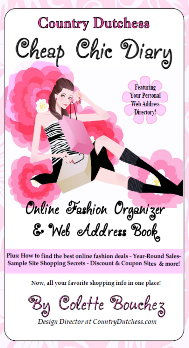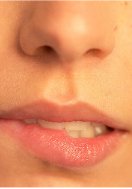 by CountryDutchess.com
by CountryDutchess.comFrom supermodels to Hollywood superstars to the girl next door, everyone, it seems, is “going green” – partiucularly when it comes to skin care and cosmetics.
But can these often times pricey "green" beauty products really make a difference – and if so, do you really get what you pay for?
As with most things, much depends on what you're looking for. But if it's kinder, gentler skin care you're seeking you could be in for a nasty surprise.
"The perception is that natural ingredients are more pure and kinder to skin than something that is made in lab – but nothing could be farther from the truth," says dermatologist Joel Schlessinger, MD, Immediate Past President of the American Society of Cosmetic Dermatology and Aesthetic Surgery.
So, says Schlessinger if you’re buying a natural product to avoid breakouts or even allergic reactions, well you could be in for big disappointment. In fact, one study in the British Journal of Dermatology found that popular natural ingredients - including tea tree oil, feverfew, lavender and jasmine - are among the most likely ingredients to evoke allergic or sensitivity responses .
In fact, if your skin really is sensitive, then experts say your dollars will be better spent by choosing a product designed for sensitive skin - even if it's not technically "green".
But you're like many of our girlfriends, your reason for going "green" has less to do with your skin care needs and more with avoiding certain questionable chemicals found in many cosmetic products . If so, then it's important to know there are many shades of "green".
And by that we mean that there is no regulation that defines the term " natural" when used to describe cosmetic or skin care products. So, in fact, a cream, lipstick, shampoo, or foundation - in fact any cosmetic product at all - could be labeled " natural" and still be brimming with all the chemicals you don't want.
“There are companies who take the term natural very seriously, and produce products that are, for the most part free of many of these questionable chemicals, but there are still many that use the word in a meaningless way," says Daniel Fabricant, PhD, the vice president of scientific affairs for the National Products Association.
The worst part: Even the products that don't deserve to use the term frequently use it to jack up the price above what " regular" products of the same type might cost. And that is no Cheap Chic Bargain by any standard!
Is It Really Green? How To Tell!
So, how can you tell what you're really buying - and whether or not it's worth the extra price?
Well one way is to look for a brand new seal of approval from the Natural Products Association. Although this is an inter-industry organization representing natural cosmetic companies, they have launched a new set of strict ingredient and preparation guidelines that products mus
 t meet before they get that coveted seal . While seeking the seal is totally voluntary, if you don't pony up the right ingredient list, you' re not getting in the club!
t meet before they get that coveted seal . While seeking the seal is totally voluntary, if you don't pony up the right ingredient list, you' re not getting in the club!To make it a little easier to find the brands that do carry the seal , the Natural Products Association website maintains a full list of every item that has met the approval standards.
Of course not every face cream or lip gloss that does meet the standards applies for the seal. So, if you see a product that you think you like - and it doesn't have the seal - before plunking down your hard earned dollars, put it through this quick test to see if it makes the grade.
1. Find out what percentage of the ingredients are natural. ( To carry the seal 95% of ingredients must be natural).
2. Find out if the product is tested on animals? ( No animal testing of any kind allowed on products that carry the seal).
3. Read the label to see if the product contains any of the following ingredients : Parabens, sulfates, chemical sunscreens, petro chemicals, gycols, pthalates, PEGs, PPGs, DEA/TEA, synthetic polymers, formaldehyde donors or 1,4 -Dioxanes. ( Natural products do not).
4. Give it the "whiff" test." If it smells like a chemical or if it says it contains a natural ingredient like strawberries but you think it smells like an imitation strawberry flavored lollipop, then it may not be as natural as you think!
You might also enjoy reading:
Quick and Easy Eyeliner Tips: How To Make It Last!
Eat Chocolate - Look Younger!
For round-the-clock fabulous time & money saving beauty and style advice visit CheapChicDiary.com - or CountryDutchess.com : Your Source For Cheap, Chic and Fabulous!
Copyright by Colette Bouchez 2009 - All Rights Reserved.
In addition to US Copyright, the text of this CheapChicDiary article is licensed under a Creative Commons Attribution 3.0 License. All Formatting and style elements of this page are not available under this license and Colette Bouchez retains all rights in those elements.





























No comments:
Post a Comment